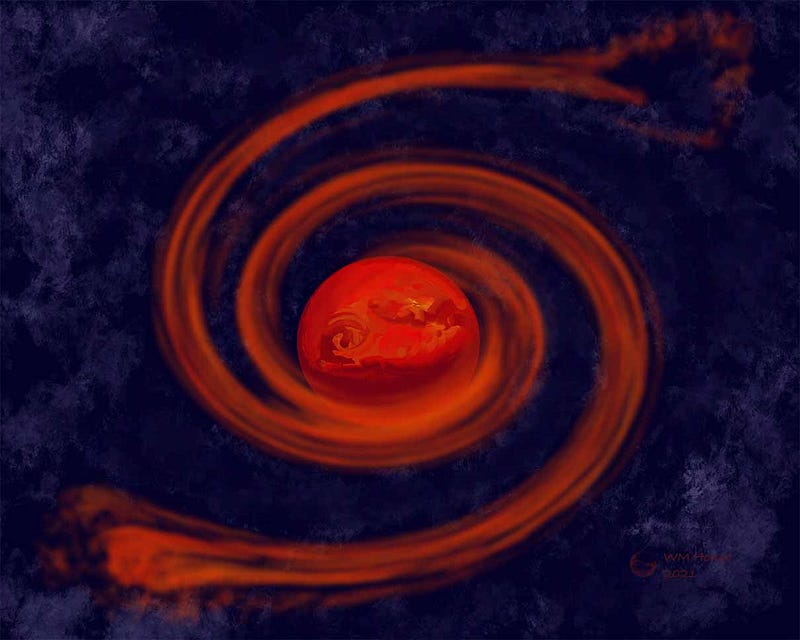The Role of Cosmic Debris in Earth's Water and Life Formation
Written on
Chapter 1: The Birth of Earth's Water
About 4.5 billion years ago, the universe existed in a state of equilibrium for nearly nine billion years before a significant event occurred in a distant region of the Milky Way Galaxy. This event led to the formation of a moderately sized planet orbiting a relatively young star, which is presently the only known planet capable of supporting life. While this fact is often touted, it may reflect more on our limited understanding of the universe than on any definitive knowledge. What is clear, however, is that Earth originated as a planet abundant in water, which is essential for life as we recognize it.
The initial conditions of Earth were characterized by extreme heat due to the accumulation of cosmic debris in the proto-Earth's gravitational field. This heat needed to dissipate before water vapor in the atmosphere could condense and give rise to the first oceans. While the exact timeline for this process remains uncertain, most scientists agree that liquid water likely appeared before 3.8 billion years ago. The dating of ancient geological formations, such as pillow basalts found in the Isua Greenstone Belt of Iceland, supports this timeline, as these rocks are 3.8 billion years old and can only form underwater.
Further geological studies suggest that water may have existed even earlier. Research on detrital zircons from the Jack Hills region in Western Australia indicates that these minerals formed in the presence of liquid water approximately 4.4 billion years ago. Since zircons are radioactive and useful for dating, their analysis implies that a hydrosphere was present shortly after the planet's formation.

Section 1.1: The Origins of Water
The question remains: where did all this water come from?
Comets and Asteroids
While science is founded on concrete data and measurements, it often ventures into the realm of theoretical exploration. A hypothesis represents an untested idea, while a theory is a broader speculation grounded in objective evidence, though still unproven. Our understanding of ancient cosmic events relies on modern theories formulated from data collected today. The selection of one theory over another often hinges on the amount of supporting evidence available.
One key observation is the deuterium-to-hydrogen (DH) ratio in Earth's oceans. Although the lighter hydrogen can escape into space, this ratio should not decrease over time. Studies show that asteroids possess water with DH ratios similar to those found in today's oceans, while comets exhibit ratios that can be up to twice as high.
This evidence bolsters a prominent theory suggesting that Earth's water originated from extraterrestrial sources, specifically from asteroids that bombarded our planet approximately 700 to 800 million years after its formation, during a period known as the Late Heavy Bombardment. However, this theory does not entirely align with findings from the Jack Hills zircons, which suggest the presence of liquid water much earlier.
Section 1.2: The Search for Evidence
Scientists understand that the validity of a theory increases as more data accumulates. This brings us to the exciting realm of space exploration, particularly the detailed analysis of small celestial bodies.
In 2010, the Japan Aerospace Exploration Agency (JAXA) became the first to successfully collect samples from an asteroid through its Hayabusa mission. Following this, the Hayabusa2 mission launched in 2014, ultimately returning with samples from the asteroid 162173 Ryugu, which contained water that closely resembled oceanic water. Additionally, the European Space Agency's Rosetta mission found that a significant portion of a comet's mass consisted of organic molecules formed through nonbiological processes.
These findings do not definitively prove the theory, but they do lend considerable weight to it. A young planet abundant in water and organic materials would indeed be more conducive to life than a dry, barren world or a gas giant like Jupiter or Saturn. Thus, it seems plausible that our planet's ample water supply is a cosmic gift. As we continue to pollute our oceans, we must remember that we are tarnishing the very essence that enables life to thrive.
Chapter 2: Cosmic Contributions to Life
The first video titled "Was Cosmic Dust Responsible for Life on Earth?" delves into the intriguing theories surrounding how cosmic materials may have played a role in the emergence of life on our planet.
The second video, "Water and Life," explores the critical relationship between water and the development of life on Earth, emphasizing the importance of this essential element.